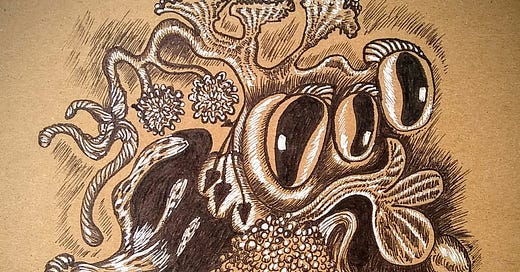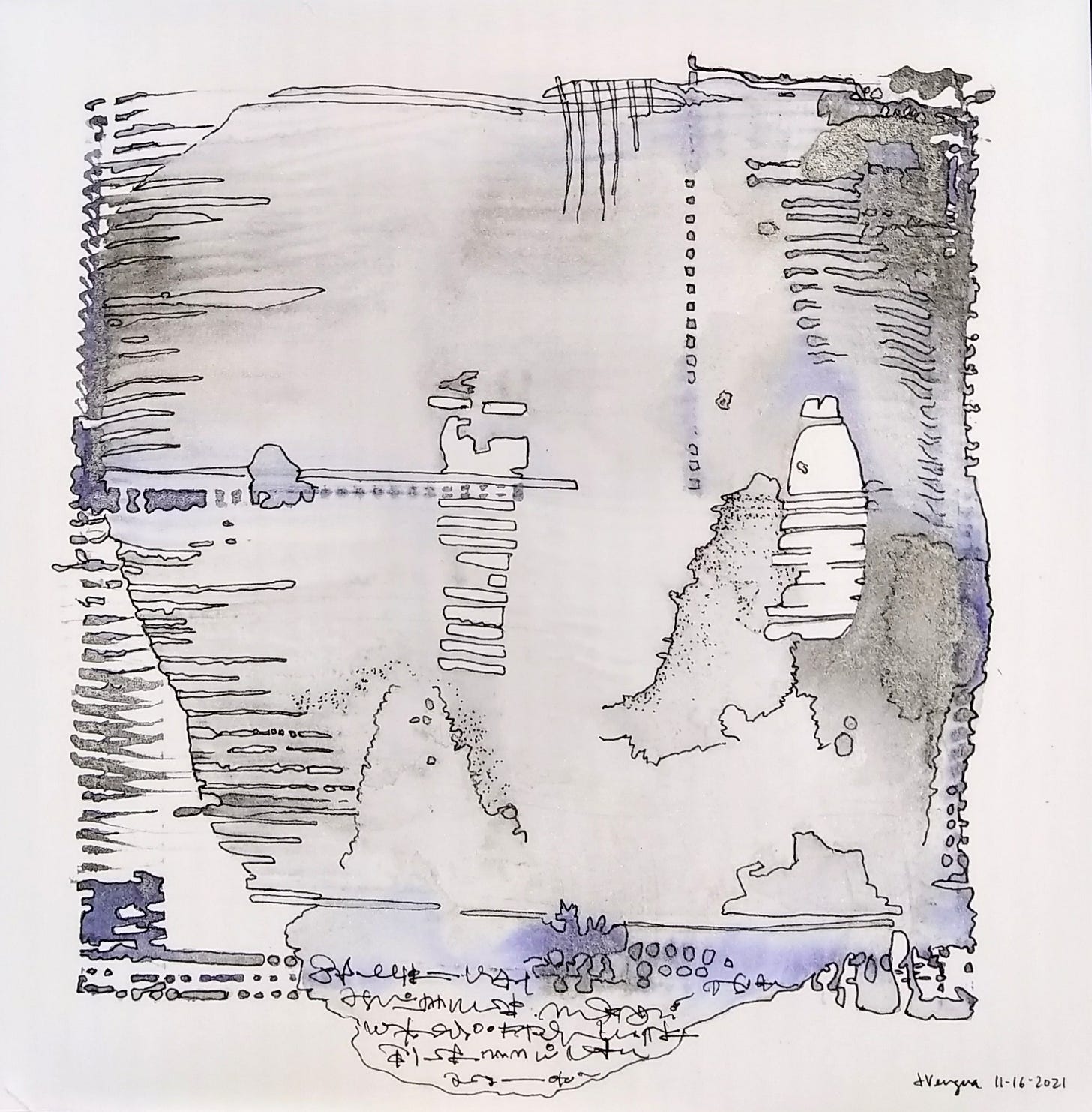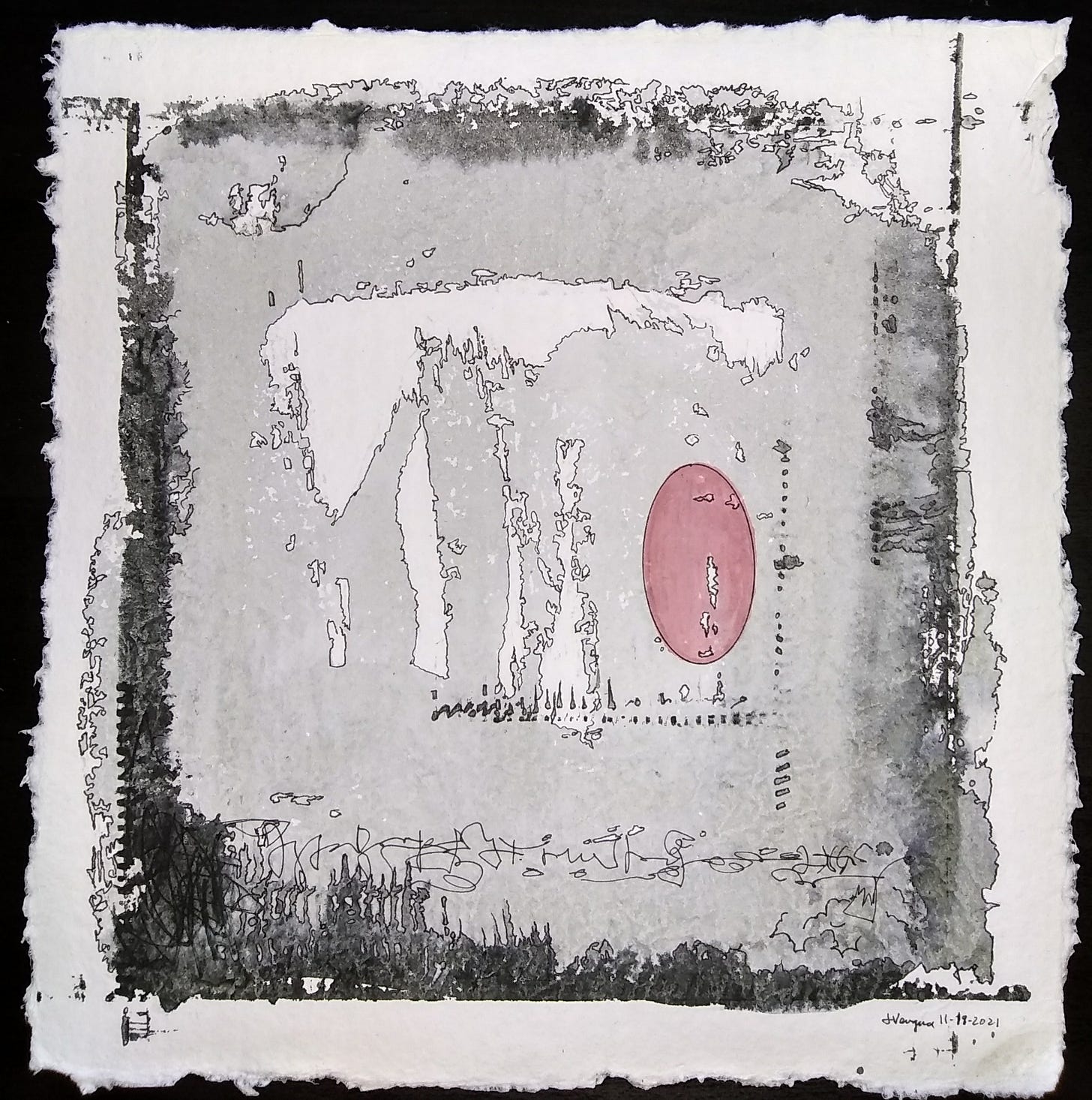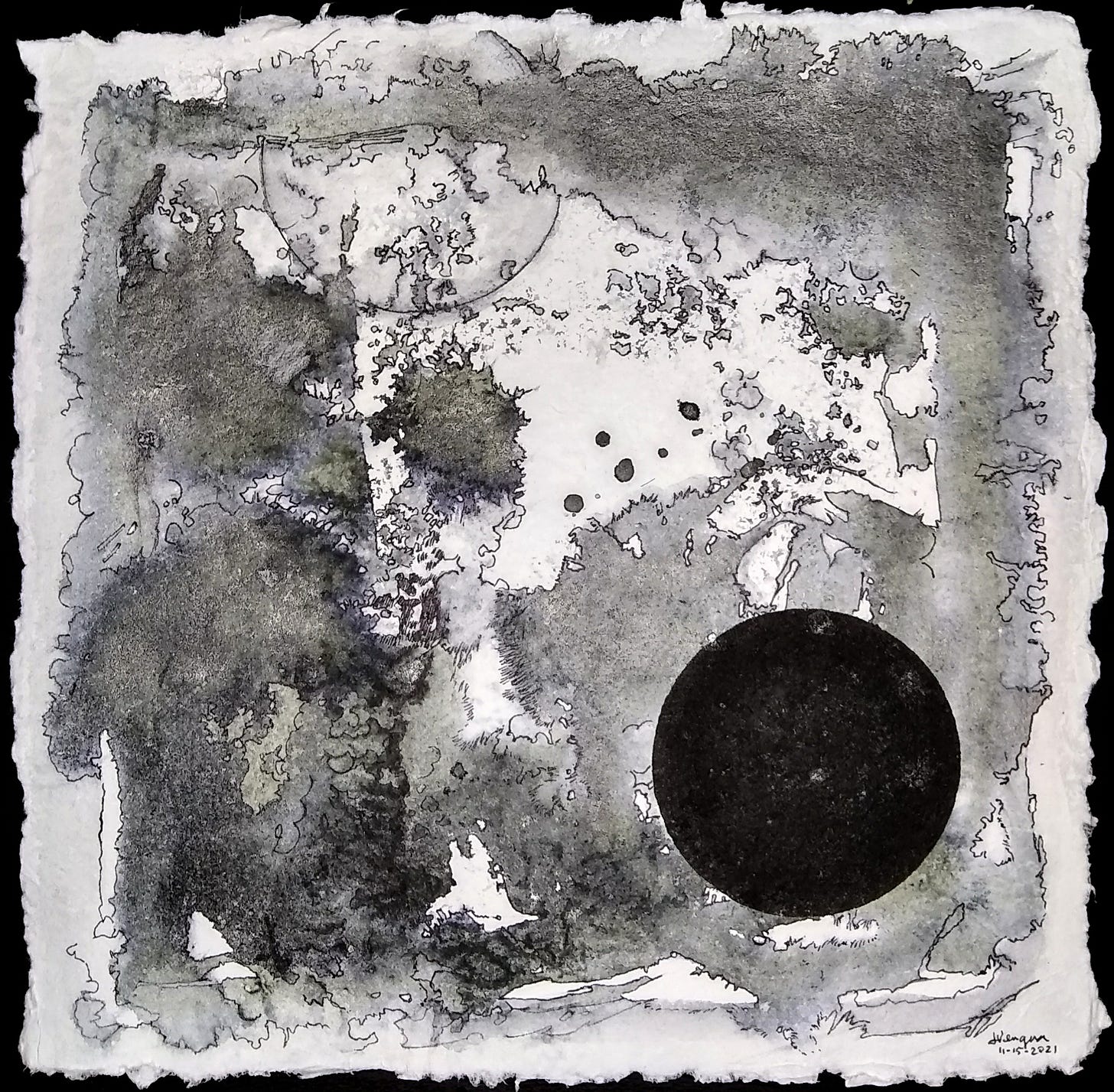11/20/2021 #41
American Horror, Necronomicon, Art, LeGuin’s Bag, “Never Alone” (Inupiat), Psychedelics & POC, Sentience, Dickinson (Art Ranger), Otoliths, the Hu, Dune, Big Boi/Kate Bush.
Speaking of the Cthulucene (see Issue #40 of The Outpost); my comments about the Cthulucene (Haraway) and H.P. Lovecraft floated up a few memories from my teaching days. I once taught a university course on horror literature and race. I think many of the students attracted to the “horror” aspect of the course barely registered the mention of slave narratives in the syllabus. So they were surprised to find themselves reading, among other texts, Harriet Jacobs’ Incidents in the Life of a Slave Girl. We also read Hector St. Jean de Crèvecœur’s “Letters from an American Farmer” (1782).
Crèvecœur was a French immigrant, escaping monarchic Europe in pursuit of the American Dream—freedom and land of his own in North America; he would purchase farmland and become one of the “tillers of the earth.” But his first experience of the horror in America came in the form of an encounter, in South Carolina, with a horribly beaten and bloodied slave, suffering terribly and left to die in a locked cage hung under a tree. It was the author’s first encounter with American horror. As Alan Taylor wrote in “The American Beginning,” the optimistic Crèvecœur’s experience in this country ultimately turned sour and pessimistic.
Also on the reading list for that course were short stories by H.P. Lovecraft, whose racism and xenophobia were expressed through his Cthonic, tentacular “elder gods” and their minions in the Cthulhu mythos. Our classroom discussions often focused on how perceptions of race and culture inform the horror literature of the U.S., and how some of its narrative terror may be a response (subconsciously or not) to the realities of our country’s violent past.
The last day of the course was to be marked by the ceremonial opening of a book that loomed large in the Lovecraft mythos, the dreaded Necronomicon. Somehow, I had found a “copy” of the (supposedly) ancient tome, listed in the last remnants of the UC Berkeley library card catalogue—but I had to put in a special request for it to be transferred over from an east coast library.
I’m sorry to say that the book never materialized.* If it had materialized, the very act of opening it would’ve unleashed who-knows-what upon the world: Demons? Hordes of squid? Mass hysteria? Unending Plagues? I likely would’ve turned into a monstrous slobbering minion of Cthulhu or Yog Sothoth—one of those creepy gods. What sweet revenge on the English department that would’ve been for that adjunct instructor!
Necronomicon Video from Joseph Nanni:
Ahem.
Funny thing about that – living as I am in Monterey, site of the world-class Monterey Bay Aquarium, with its many tentacled inhabitants, and its state-of-the-art marine labs, I think folks around here have a great appreciation for the tentacled ones who live in these waters. I know I do. Perhaps I’m one of their minions, after all.
*There are said to be a number of hoax copies of the Necronomicon. They have been found in bookstores, libraries, and have even been published, such as the volume issued by Owlswick Press in 1973. I suspect the copy listed in the UC Berkeley card catalogue was placed there by a prankster librarian.
ART
Although the art I’ve been creating lately reflects my interest in natural processes of flow, change, growth, and destruction—they are also in some ways a product of horror. Beyond the horror of what people can become at their worst, which is bad enough, there is also the horror of overwhelming climatic change, of viral change, and of the unknown—I mean, what the hell is going to happen next?
Nevertheless, in my readings of gothic horror, I learned that, within the encounter of horror (at least in gothic horror fiction, film, and music) there can also exist an almost metaphysical sense of the sublime—especially when the horror is produced by something stunningly vast and overwhelming. Why? Because it disorients; it drastically changes your perspective and it puts you in your “place.” And your place in this universe, it turns out, is very small and vulnerable.
Questions that come up for me about the relation between my drawings and writing: Is my art really art or is it writing—or both? Is it all asemic writing, some “strange,” “alien,” chthonic no-language? What does this have to do with, say, Filipinos and other migrants, refugees, and travelers to this land? With my mother’s lonely, nauseous, and disorienting migration by ship to the US? With the language never taught to me by my parents? With the stories and myths they knew, but never repeated?
LINKS
Pay attention to the small: Ursula LeGuin’s “Carrier Bag Theory of Fiction” (The Anarchist Library).
Inupiat cultural insights from “Never Alone” (see below for the game trailer):
About the Inupiat video game, “Never Alone”
Emily Dickinson was one sublime poet. The Department of Homeland Inspiration’s Art Ranger introduces “Emily the Dickens”:
Yes, it’s about Emily Dickinson (1830 - 1886) who also liked to bake bread. Though described as an eccentric recluse - well maybe she’s a good friend instead - one who lasts through the decades and centuries and brings each chosen word to life. What a pioneer, wielding pencil in apron pocket who bundled her poems in packets of twine! As part of Art Ranger’s research we dipped into this astonishing art book containing image facsimiles of her envelope poems Emily Dickinson: The Gorgeous Nothings. All written in pencil, on flaps, backs, corners, etc., so intimate/ immediate.
Do give a listen: Art Ranger’s podcasts are auditory art: fun, poetic, and absurd (in the best way), a perceptive commentary on our often cuckoo homeland.
In 2000 I co-edited The First Hay(na)ku Anthology (and later Vol. II) with New Zealand poet Mark Young. He has been editing and publishing Otoliths for years now, and each issue always contains a wonderful selection of experimental poetry and art. #63 is now available online and in print.
Oldest known figurative art/cave paintings? Sulawesi, Indonesia.
Earliest discovered rock art (not necessarily figurative)? Mongolia: “Javkhlant Sacred Mountain in Khanbogd soum, Umnugobi aimag as well as the Dalan Khar Mountain in Nomgon soum” (Mongolian News Agency)
SOUNDINGS
Mongolia’s premiere folk rock & heavy metal band? The Hu:
In one of their “softer” moments, singing in Mongolian:
Below, singing in a language created for Star Wars Jedi: Fallen Order. Skillful playing (their formal musical training is evident) and powerful vocals:
Dune: Original motion picture soundtrack by Hans Zimmer. Talk about “sublime” and uncanny:
Rapper Big Boi talking about why he loves Kate Bush’s “Running Up That Hill.”
Once again it’s past the midnight hour. Until next weekend . . .
If you like what you’ve read:
If you haven’t yet subscribed, please do — it’s free!
Visit my website: https://jeanvengua.com







